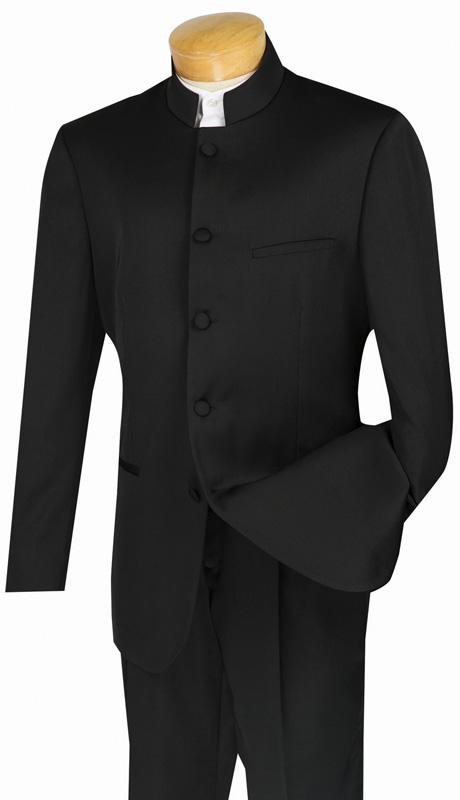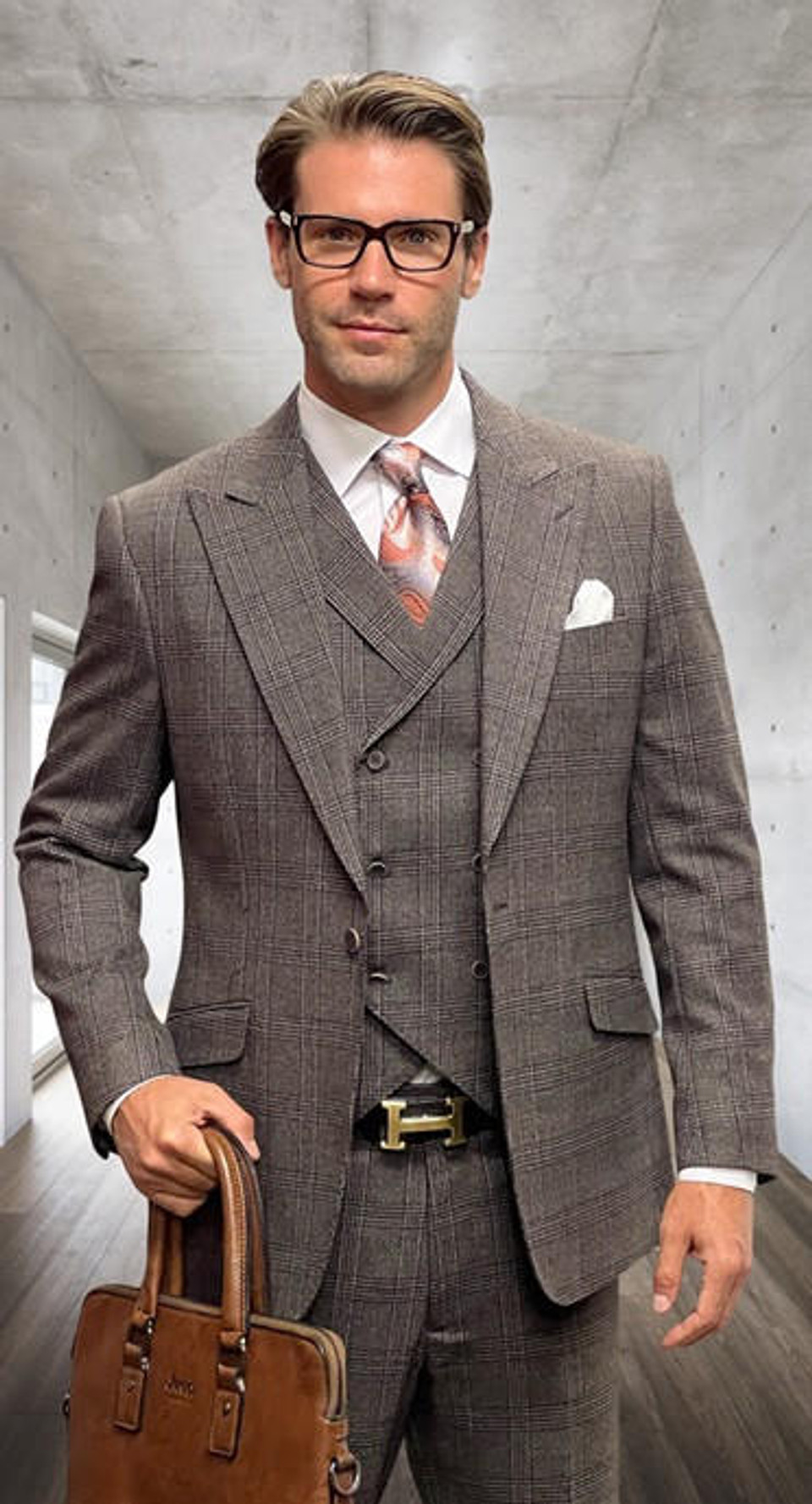Jul 16, 2024
The Mao Suit and Why it Continues to Resonate in Modern Fashion
Why the Mao Suit Continues to Resonate in Modern Fashion: A Closer Look at Its Enduring Appeal
In the ever-evolving world of fashion, trends come and go with lightning speed. Yet, there are some styles that manage to transcend time and maintain their allure, captivating generations of fashion enthusiasts. One such iconic garment is the Mao suit. Originating from China, this revolutionary ensemble has a rich history and a unique aesthetic that continues to captivate designers and fashion aficionados around the world. Its enduring appeal lies in its ability to seamlessly blend tradition and modernity, offering a sense of timeless elegance and cultural significance. In this article, we will learn why the style continues to resonate in modern fashion, exploring its historical roots, symbolic meaning, and how contemporary designers have reimagined this iconic style for the present day. Whether you are a fashion enthusiast or simply curious about the influence of cultural heritage on current fashion trends.
The History of the Mao Suit
The Mao style suit, also known as the Zhongshan suit in China, takes its name from its most famous wearer, Mao Zedong, the founding father of the People's Republic of China. This suit became the de facto uniform during the Chinese Communist Party's rise to power in the mid-20th century. Also widely know as the Mandarin collar suit. Its origins, however, can be traced back to the late Qing dynasty, when a wave of anti-Manchu sentiment led to the adoption of more traditional Chinese clothing. The suit, with its stand-up collar, buttoned front, and straight-cut silhouette, was a departure from the flowing robes of the past and signified a new era of Chinese identity and independence. They always had a slightly military look to them. If you look at your Marine uniform and just add a few things, you get the idea.

The Cultural Significance of the Mao Suit
Beyond its historical roots, the banded collar suit holds deep cultural significance. It represents a collective identity and a sense of national pride. During the Cultural Revolution, wearing the suit became a symbol of loyalty to the Communist Party and a rejection of Western imperialism. The suit embodied the ideals of simplicity, equality, and the pursuit of a classless society. It became a uniform for the masses, reinforcing the idea of unity and solidarity among the Chinese people. Today, the style continues to evoke a sense of nostalgia and pride in Chinese culture, serving as a reminder of a pivotal era in the nation's history.
The Evolution of the Mao Suit in Modern Fashion
While the style may have originated as a political uniform, its influence in modern fashion extends far beyond its original purpose. Designers around the world have drawn inspiration from its clean lines and minimalist aesthetic, incorporating elements of the uit into their collections. The suit's boxy silhouette and neutral color palette have been reimagined in contemporary designs, offering a modern take on this classic style. Its versatility allows for endless interpretations, from tailored suits for the office to casual separates for everyday wear. By blending traditional Chinese elements with modern design sensibilities, the Mao Tze Tung suit has become a timeless staple in the fashion industry.
The Influence of the Mao Suit on Western Fashion
The impact of the style extends beyond its cultural significance in China. In the 1960s and 1970s, Western fashion designers, such as Yves Saint Laurent, embraced the Mao suit and incorporated its elements into their collections. This fusion of Eastern and Western styles created a new wave of fashion that challenged traditional notions of dress. The Mao suit's influence can still be seen today, with Western brands incorporating Mandarin collars, buttoned fronts, and boxy silhouettes into their designs. This cross-cultural exchange not only pays homage to the Mao suit's historical importance but also highlights the enduring appeal of its design.
Celebrities and Influencers Embracing the Mao Suit
Celebrities and influencers have played a significant role in popularizing the Mao suit in modern fashion. From Hollywood stars to social media influencers, many have embraced this iconic style and made it their own. Celebrities like Rihanna, David Bowie, and Harry Styles have been spotted wearing the Mao suit on red carpets and in their everyday lives, showcasing its versatility and timeless appeal. Social media platforms have also contributed to the dissemination of the Mao suit's popularity, with influencers and fashion enthusiasts sharing their personal styling tips and outfit ideas. This widespread adoption by influential figures has solidified the Mao suit's place in contemporary fashion.
How to Style the Mao Suit for a Modern Look
Styling the Mao suit for a modern look is all about balance. Pairing the structured silhouette of the suit with softer, more feminine pieces can create a juxtaposition that adds a contemporary edge. For a casual look, consider pairing the suit jacket with a pair of high-waisted jeans and sneakers. To elevate the ensemble for a more formal occasion, opt for tailored trousers and a silk blouse. Experimenting with accessories, such as statement belts or bold jewelry, can also add a personal touch to the outfit. The key is to embrace the versatility of the Mao suit and make it your own.
Ethical Considerations of Wearing the Mao Suit
As with any fashion choice, it is important to consider the ethical implications of wearing the Mandarin style collar suit. The Mao suit's association with the Chinese Communist Party and its history of human rights abuses may give some pause. It is crucial to separate the garment from its political context and acknowledge its cultural significance while also being aware of the potential sensitivities surrounding its use. When purchasing a Mao suit-inspired garment, it is advisable to support brands that prioritize ethical sourcing and production practices. Being mindful of the garment's history and cultural significance allows us to appreciate its design while respecting its origins.
The Future of the Mao Suit in Fashion
As fashion continues to evolve, the Mandarin suit is likely to retain its enduring appeal. Its timeless design and cultural significance make it a symbol of heritage and innovation. Designers will undoubtedly continue to draw inspiration from the Mao suit, incorporating its elements into their collections and reimagining it for future generations. As fashion becomes more inclusive and diverse, the Mao suit's ability to seamlessly blend tradition and modernity will continue to captivate audiences worldwide.
Fashion Brands Incorporating the Mao Suit into Their Collections
Many fashion brands have embraced the Mao suit's aesthetic and incorporated it into their collections. From high-end designers to fast-fashion retailers, the influence of the Mao suit can be seen in a variety of brands and price points. Designers like Gucci, Dior, and Alexander McQueen have featured Mao suit-inspired pieces on their runways, showcasing their interpretation of this iconic style. High-street brands like Zara and H&M have also introduced affordable options, making the Mao suit accessible to a wider audience. This widespread adoption by fashion brands solidifies the Mao suit's position as a timeless and versatile garment.
Final Words: The Lasting Impact of the Mao Suit on Fashion
The Mao suit's enduring appeal lies in its ability to seamlessly blend tradition and modernity. Its rich history, cultural significance, and minimalist design have captivated generations of fashion enthusiasts. From its origins as a political uniform to its influence on Western fashion, the Mao style has left an indelible mark on the fashion industry. Its timeless elegance and versatile silhouette have allowed designers to reinterpret this iconic style for the present day. As we look to the future, it is evident that the Mao suit will continue to resonate in modern fashion, serving as a testament to the power of cultural heritage and the enduring appeal of timeless design.




